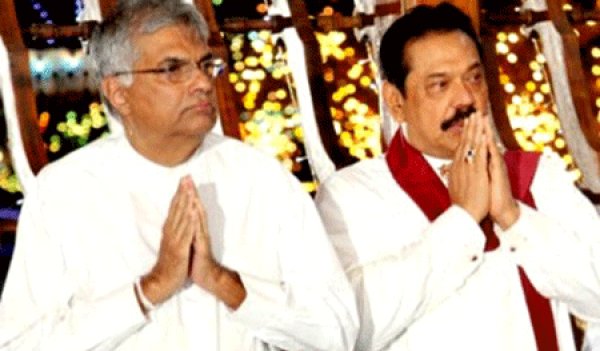2010 April elections 61.3% of the total registered voters went to poll. That was 8.6 million voters. This certainly is not the number that would go to vote on 17 August. Present voting can be a little more closer to the 2015 January 08 presidential poll, which was 81.5%, totalling 12.3 million out of 15.04 million registered voters.
There will be a difference nevertheless on the total polled. Except in 1989 February elections, no parliamentary election had polled equal or more than a presidential election. Since 1994 in all parliamentary elections the percentages were;
1994 – 76.2%; 2000 – 75.6%; 2001 – 76.0%; 2004 – 75.9%
Thus this time too, the voter turnout may not exceed 76% out of 15.04 million registered voters. This is national. But in a parliamentary election, it’s the district wise percentages that count better, for any projection.
Rajapaksa had comfortably won all 03 districts in Southern Province, both districts in Sabaragamuwa, Moneragala district in Uva, Anuradhapura district in North Central Province, Kalutara district in Western Province and Matale district in Central Province totalling 10 districts from 17 districts outside North and East. In Gampaha district, it had been touch and go for Rajapaksa falling behind with just 0.3% only. So was it in Puttlam. He lost by just 01.0% votes. In Badulla district he trailed behind Sirisena by just 0.1% votes. If that map is taken for this August 17 election, the UNP(UNFGG) had won only 04 districts clean with the other 03 districts going the UPFA way, if the JVP takes out 02-03% of the votes as their share in the presidential election.
That map is ONLY VALID, if the people continue with the same fervour in defeating Rajapaksa and IF Rajapaksa can sustain the same trend in harnessing votes. While the anti Rajapaksa sentiment seems to prevail, especially in urban society, the Rajapaksa image that was “larger than life” during the presidential poll, now seems shrunk very much. Without all his State power and the charitable campaign that was not without coercion, he may not be able to impress the voter as he did 07 months ago. Therefore out of the 10 districts he won, he may retain, all 03 in the South, Ratnapura from Sabaragamuwa, Moneragala from Uva, Kurunegala from Wayamba and Anuradhapura from North-Central Province making a total of 07 districts. This would then give the UNP(UNFGG) 10 districts out of the 17, excluding North and East.
In such a scenario, where the voters generally get polarised within two main camps, chance for a third force to emerge with a strong electoral presence is not very possible. Thus JVP coming back great, is not possible. Yet they may increase their vote bank substantially in Colombo district where the urban middle class lavish on anti MR rhetoric and comfortable in keeping out of other major issues like political solutions and “Unitary” States.
YET, none cannot for certain predict how the voters behave in an election in absolute numbers. With all “calculations” one makes, there is a “human” factor that goes beyond numbers and percentages. This “human” factor does not necessarily include the money that flows in excess to political party leaderships. Does not necessarily include how the Catholic church speaks to its flock, especially along the Western coastal belt. Does not say how the Muslim community would now go to polls, with their own district selections. And these numbers often does not count the “frustrated” as a slowly growing percentage that may not be going to vote. Well, none of them can be factored into numbers and percentages, but they do have a value when the district vote is finally counted from 17 August night.
This therefore is “guess work”, while giving all those factors and trends, a taste of their own in pinning down number of seats for each political party at district level. To make the final counting easy, the 17 districts outside North-East is first tabled as follows.
UNP UPFA JVP
Colombo 10 07 02
Gampaha 10 07 01
Kalutara 06 03 01
Ratnapura 04 07 ---
Kegalle 06 03 ---
Galle 04 06 ---
Matara 03 04 01
Hambantota 02 04 01
Badulla 06 02 ---
Moneragala 01 03 01
Matale 03 02 ---
Kandy 08 04 ---
Nuwara Eliya 05 03 ---
Kurunegala 06 09 ---
Puttlam 06 02 ---
Anuradhapura 04 05 ---
Polonnaruwa 03 02 ---
Total from 17 districts 87 73 07
In the East, both Trincomalee and Digamadulla can return Sinhala MPs. In 2010, UPFA got 02 Sinhala MPs elected from Trincomalee. This election it is possible, the UNP gets both MPs the TNA and SLMC sharing the other 02. In Digamadulla, UNP can retain their 02 seats while the SLMC could win 03, thus reducing UPFA to 01 and leaving the other with TNA as before.
When these are added to the Colombo based political parties, the tally would be UNP(UNFGG) – 91; UPFA – 74; JVP – 07 from the 196 MPs the people would directly elect. From the balance 24 seats in North-East provinces, the break up can be;
TNA - 15 (Trinco 01 seat has to be added)
EPDP - 01
SLMC - 05
ACMC - 02
UNP - 01 (from Jaffna)
The 29 national list MPs will have to be added to these party totals, according to the proportion they poll from the total polled nationally. This can roughly be UNP – 12, UPFA – 09, TNA – 03, JVP – 02, SLMC – 02 and ACMC – 01
The 225 MPs in the next parliament will thus be;
UNP – 104
UPFA – 83
TNA – 19
SLMC – 07
JVP – 09
ACMC – 03
Well, this is guess work (on 01 August) as said before, giving numbers from previous elections some human flexibility to adjust according to present day politics.
Kusal Perera
01 August, 2015
Colombo






